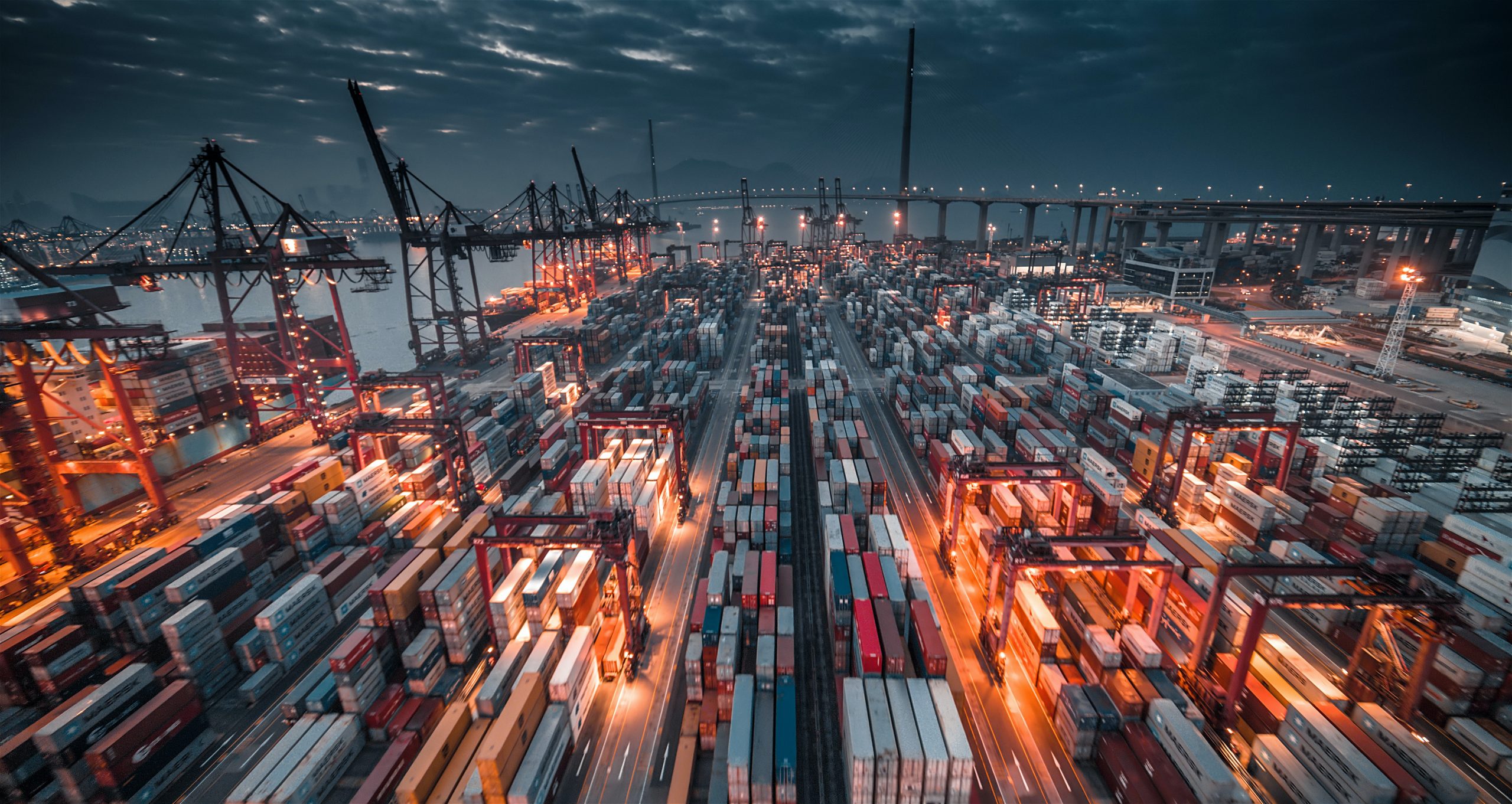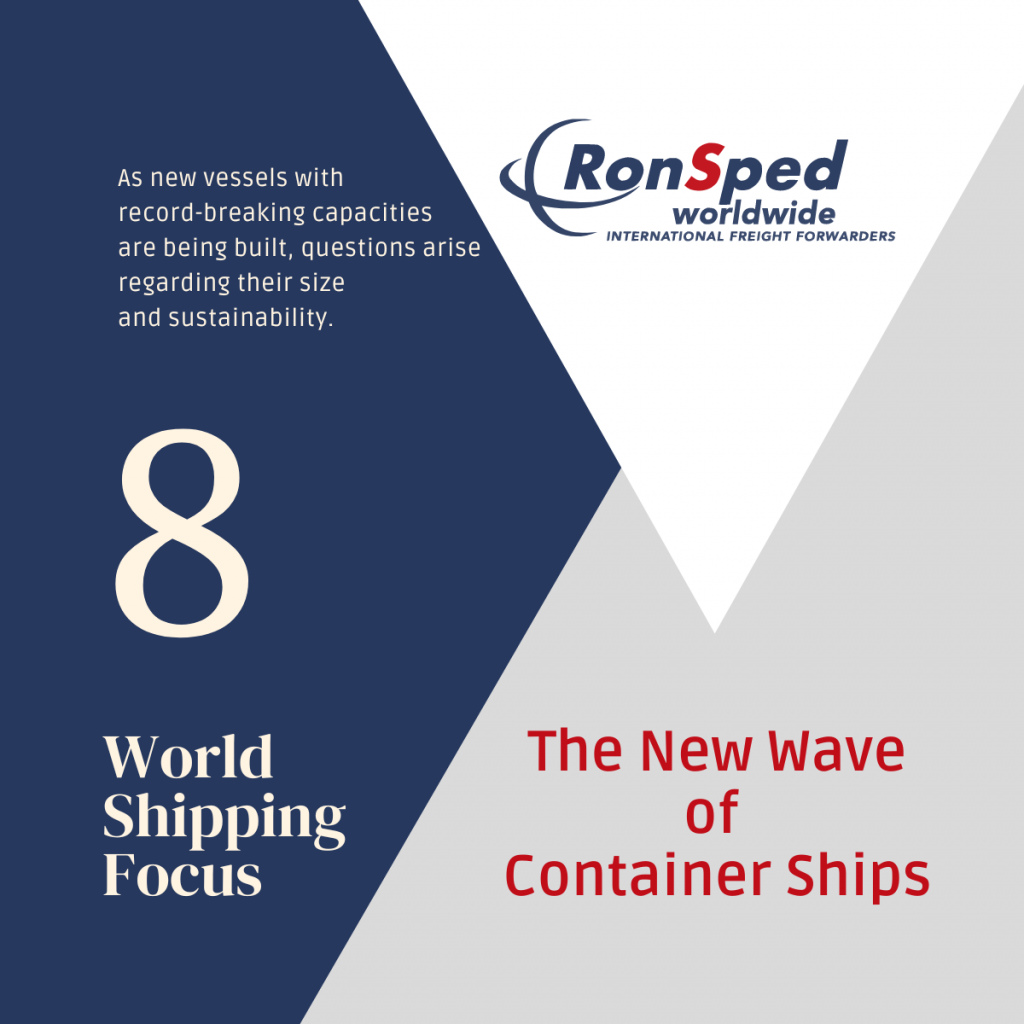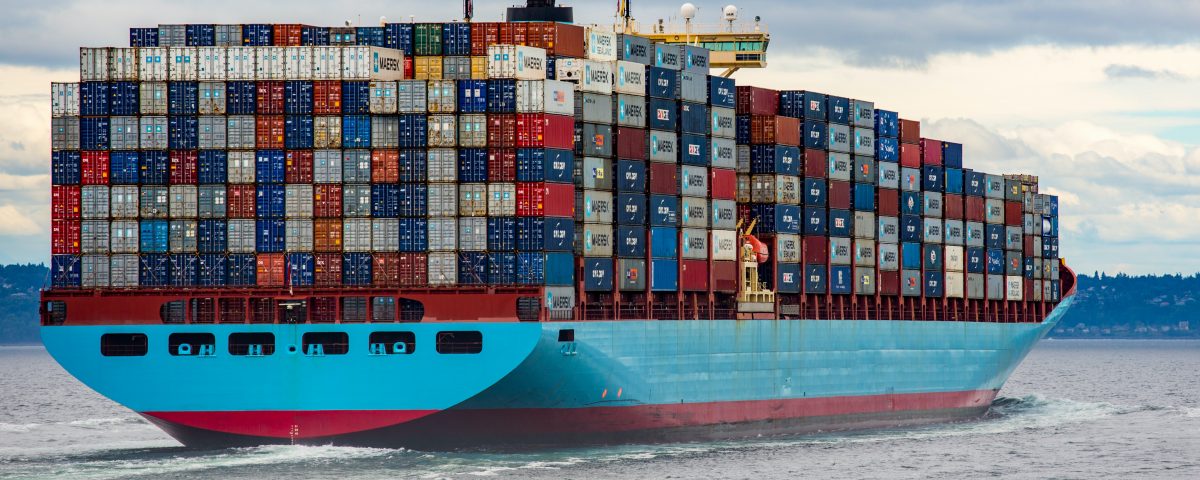
The global ports performance
24 Maggio 2023
The rise and fall of the new Silk Road
12 Giugno 2023The container ship industry is experiencing a significant growth in capacity for the first time in many years. As new vessels with record-breaking capacities are being built, questions arise regarding their size and sustainability. Mega container ships offer a significant advantage in terms of freight volume per ship. Their large capacity has the potential to address the container crisis; however, their size also introduces additional costs and requires adjustments to the global supply chain. To determine the viability of mega container ships, it is crucial to carefully consider the benefits they offer in relation to the associated costs and the impact on ports.
In the world of container shipping, there are seven primary types of vessels available for transporting cargo. These types, listed in ascending order based on their capacity, include:
- Small Feeder – Up to 1,000 TEUs
- Feeder – 1,001 to 2,000 TEUs
- Feedermax – 2,001 to 3,000 TEUs
- Panamax – 3,001 to 5,100 TEUs
- Post-Panamax – 5,101 to 10,000 TEUs
- New Panamax (or Neo Panamax) – 10,000 to 14,500 TEUs
- Ultra Large Container Vessel (ULCV) – 14,501 TEUs and higher
These distinct categories represent varying levels of capacity, enabling efficient transportation of cargo based on different shipment requirements.

The trends in shipping industry: companies position and variation of prices
Maritime companies justify the race for gigantism with economies of scale: the more containers a ship can transport over long distances (considering that the majority of these giants travel on routes between Asia and Europe), the lower the cost per container journey. However, reality shows that size can create imbalances and volatility in freight rates, which alternately have negative repercussions on shipowners or their clients. Thus, the race for larger cargo holds has created an oversupply of space, leading to a collapse in freight rates to a few hundred dollars per TEU (twenty-foot equivalent unit) between Asia and Europe, dragging global maritime companies to the brink of bankruptcy (as was the case with the Korean Hanjin Shipping in August 2016). Then the situation stabilized, but the pandemic disrupted the balance as companies reduced frequencies or even canceled some services, causing a shortage of cargo space just when the initial crisis was over and China resumed supplying a significant portion of the West with goods. This led to rates of $7,000 to $8,000 per TEU, with the added frustration of a decline in service punctuality. This is the situation we experienced for the bigger part of 2022, which demonstrates that the size of container ships alone does not reduce transportation prices.
Ever Alot and MSC Tessa: Breaking Capacity Records
The MSC Tessa, the world’s largest container vessel has been delivered this month by its Chinese shipbuilder to MSC. The Tessa’s design incorporates several features which improve energy efficiency. It uses ‘air lubrication technology’, reducing its energy consumption and carbon emissions by up to 4%. Ever Alot, with its impressive capacity of 24,004 TEU, was the largest container ship ever built, delivered to Evergreen in June 2022. These two container ships are setting new benchmarks for the industry, but will they continue to define the future of container ship sizes?
The challenge for the infrastructures
Undoubtedly, large container ships reduce costs for shipowners, but partly pass them on to infrastructure, which must adapt to the larger dimensions of the ships. We are talking about enormous investments, starting with artificial canals like the Suez and Panama Canals, which had to widen within a few years. The same goes for ports, which need to relocate breakwaters, deepen berths, extend quays, enhance ship-to-shore cranes, expand yards, increase container handling equipment, and lengthen railway tracks.
Growing Container Ship Fleet: An Industry Trend
According to recent data from Alphaliner, there are approximately 900 container ships under construction or on order worldwide, with a total capacity of 6.8 million TEU. This surge in vessel orders by shipping lines indicates a growing trend in the industry. However, since the process are still high, there is We explore the implications of this growth and what it means for the future of container ships. Apart from the new vessel, there is another trend that brings to the growt: during the first half of 2022, there were no fully cellular container vessels dismantled, marking a departure from the trend observed in previous years. To provide context, 16,500 TEU were dismantled in 2020, and a significantly larger number of 194,500 TEU were scrapped in 2019.
This decrease in scrapping activity can be attributed to the prevailing high freight rates. Under different circumstances, aging ships would have become unprofitable and sent for dismantling on Asian beaches. However, due to the current freight rates, these vessels continue to generate profits for shipping lines and, as a result, remain in operation.
The combination of introducing new vessels into service and the reduction in scrapping will lead to a substantial net growth of the fleet in the coming years. As a result, we can anticipate a significant increase in maritime transport supply starting in 2023, which will consolidate further in 2024 and 2025. This expansion is expected to surpass the growth in demand, thereby impacting the market and potentially leading to a reduction in freight rates.
Cost savings according to size
Mega container ships offer fuel efficiency benefits. This is due to their utilization of slow steaming, where fuel consumption is influenced by the vessel’s speed. In fact, a ship traveling at twice the speed will consume eight times the amount of fuel. Considering that fuel costs make up a significant portion, approximately 60%, of a vessel’s operating expenses, the fuel savings achieved through upsizing to 5,000 TEUs are considerable.
However, it’s important to note that beyond this capacity, the cost savings diminish significantly. As mega container ships increase in size, the cost savings become less pronounced. The latest generation of mega-ships exhibits savings that are only four to six times smaller compared to previous iterations.
Another crucial factor to consider is the rate of utilization. To achieve cost savings with a mega container ship, a utilization rate of at least 91% is necessary. Achieving such a high rate is challenging, particularly for trade routes with varying volumes of cargo.
While mega container ships do offer fuel conservation benefits, it’s crucial to carefully evaluate the size, cost savings, and rate of utilization to determine their viability for specific shipping requirements.
Evaluating the Environmental Impact of Mega-Ships
As the International Maritime Organisation (IMO) imposes regulations to reduce greenhouse gas emissions, the container ship industry is compelled to explore more sustainable alternatives. We examine the current transition from traditional marine fuel oil to new types of fuels, such as LNG, hydrogen, methanol, and ammonia. Are the economies of scale associated with mega-ships beneficial for the environment? We dive into data from MRV Thetis and Lloyd’s to understand that the emission of vessels with a capacity of more than 8,000 TEU, CO2 per transported cargo is less than 20 g CO2/mton-nmile, thanks to economies of scale. This shows that large-scale shipping is beneficial and even substantially more sustainable compared to other modes of transport such as trucks or aircraft powered by fossil fuels. But the lowering of emissions tends to stop over 8,000 TEU so is important to evaluate the benefits and the risks of bigger vessels.
The Future of Container Ships: Balancing Size and Sustainability
Looking at the orders starting from the second quarter of 2021, there appears to be a shift in trend towards medium-large vessels. According to Clarksons AIR, in May 2022, there were a total of 221 vessels in the 12,000-17,000 TEU segment on order, indicating a 72% increase compared to the existing fleet in this segment.
In contrast, orders for larger vessels exceeding 17,000 TEU amount to 52 units, which is equivalent to 36% of the current existing fleet. The segment experiencing more modest growth is medium-sized vessels ranging from 8,000 to 12,000 TEU. The number of orders in this segment represents a 5.4% increase over the current fleet.
Interestingly, there has been a resurgence in the market for vessels between 4,000 and 8,000 TEU, which had seen minimal construction since 2014.
These developments indicate that in recent months, there has been a greater interest in more versatile vessels compared to ultra-large container ships (ULCS) with capacities exceeding 20,000 TEU. If this trend continues in terms of future orders, it suggests that the current size of large ULCS may be reaching its commercial limit, rather than a technological or operational limit.
In conclusion, the ideal size of container ships depends on various factors.. As companies undergo relocation processes and technological changes address climate change, the industry must find a balance between vessel size and sustainability. Since mega-ships of 24,000 TEU, CO2 emissions per unit of cargo transported are very similar to those of 14,000-16,000 TEU, is likely that the focus will remain among this last one that avoid port congestion or stress on the supply chain.
Read the other World Shipping Focus News:
Post 2M. perspectives in container shipping
India as a global hub for logistics and manufacturing
The 2035 ban to endothermic engines in Europe and how it affects Italy’s economy and export
The value of Cosmetic industry in Italy and the export forecast for 2023
Sources:
https://www.container-xchange.com/blog/mega-ships-and-their-impact-on-ports-and-shipping/
https://supplychaindigital.com/logistics/worlds-largest-container-ship-delivered-to-msc


